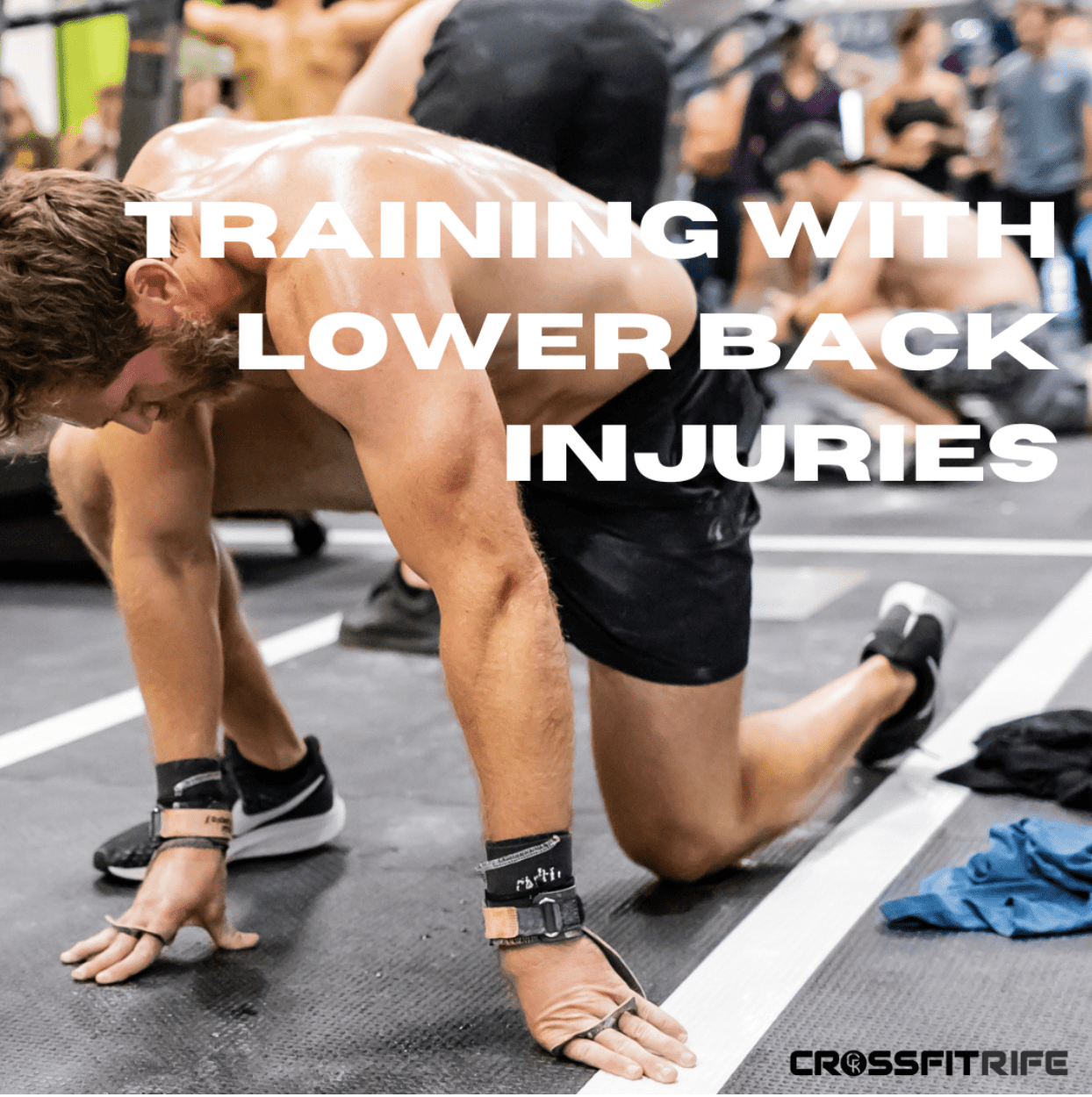Lower back injuries can be incredibly debilitating and can put a major damper on your training routine. However, it’s important to remember that continued training is still important, even when dealing with a back injury. In this article, we’ll go over why continued training is important and things to consider when training with a back injury.
Don’t stop training
First and foremost, continued training is important because it helps to maintain muscle strength and flexibility in the injured area. Even if you can’t perform certain exercises or movements due to your injury, there are still many other exercises that you can do to keep your body in good shape. For example, if you’re dealing with a lower back injury, you may still be able to perform exercises like squats and deadlifts, but with a modified form.
Here are some alternative training options that can help you maintain your fitness while allowing your lower back to heal:
- Low-impact cardio: Engage in low-impact cardio activities that don’t put a lot of stress on your lower back. Options include walking, cycling, swimming, and using an elliptical trainer.
- Bodyweight exercises: Avoid heavy weight lifting exercises that put a lot of stress on your lower back. Instead, focus on bodyweight exercises such as push-ups, squats, lunges, and planks. These exercises can help you build strength without putting too much pressure on your lower back.
- Yoga or Pilates: These low-impact exercises can help you improve your flexibility, strength, and balance. Many yoga and Pilates poses are designed to strengthen your core muscles, which can help alleviate lower back pain.
- Physical therapy: Consider working with a physical therapist who can help you develop a rehabilitation plan that addresses your specific needs and goals. They may recommend exercises and techniques to improve your mobility, flexibility, and strength, while avoiding further injury to your lower back.
- Mobility training: Mobility training exercises can help you improve your range of motion and reduce stiffness and pain in your lower back. Examples include foam rolling, stretching, and mobility exercises such as cat-cow or spinal rotations.
Prevent further injuries
Another reason why continued training is important is that it can help to prevent further injuries. When you stop training altogether, your muscles can become weaker and more susceptible to injury. By continuing to train, you’ll be able to maintain your strength and flexibility, which can help to prevent further injuries.
When training with a back injury, it’s important to listen to your body and be mindful of your limits. If a particular exercise or movement causes pain, it’s best to avoid it or to modify it so that it doesn’t cause pain. Additionally, it’s important to focus on proper form and technique, as this can help to reduce the risk of further injury.
Get professional help
It’s also important to work with a qualified coach or therapist when training with a back injury. We pride ourselves in having solid professional relationships with teams that can help us help you. That is why we have been working closely with Direct Performance for many years. They can help to design a training program that’s tailored to your specific needs and limitations. They can also provide guidance and support as you work through your injury.
A good physical therapist can help you get back to CrossFit training by developing a comprehensive rehabilitation plan tailored to your individual needs and goals. Here are some steps that a physical therapist might take to help you return to CrossFit training:
- Assessment: The physical therapist will evaluate your current physical condition, including your strength, flexibility, balance, and range of motion. They may also ask about your medical history and any previous injuries.
- Treatment Plan: Based on the assessment, the physical therapist will develop a treatment plan that addresses your specific needs and goals. This may include exercises to improve strength, flexibility, and balance, as well as techniques to reduce pain and inflammation.
- Rehabilitation: During the rehabilitation process, the physical therapist will work with you to help you regain strength, mobility, and function. They may use a variety of techniques, such as manual therapy, therapeutic exercises, and modalities like heat or ice, to help you achieve your goals.
- Progression: As you make progress, the physical therapist will adjust your treatment plan to ensure that you continue to make gains. They may gradually introduce more challenging exercises and activities to help you build endurance, strength, and confidence.
- Return to CrossFit Training: Once you have regained strength, mobility, and function, the physical therapist will work with you to develop a plan for returning to CrossFit training. This may involve gradually increasing the intensity and duration of your workouts, and incorporating modifications to help you avoid re-injury.
Overall, a good physical therapist can help you get back to CrossFit training safely and effectively by providing personalized care and a comprehensive rehabilitation plan
Continued training is important even when dealing with a back injury. By maintaining muscle strength and flexibility, preventing further injury and working with a coach or therapist, you can still make progress and achieve your fitness goals. Remember to listen to your body and be mindful of your limits when training with a back injury.






